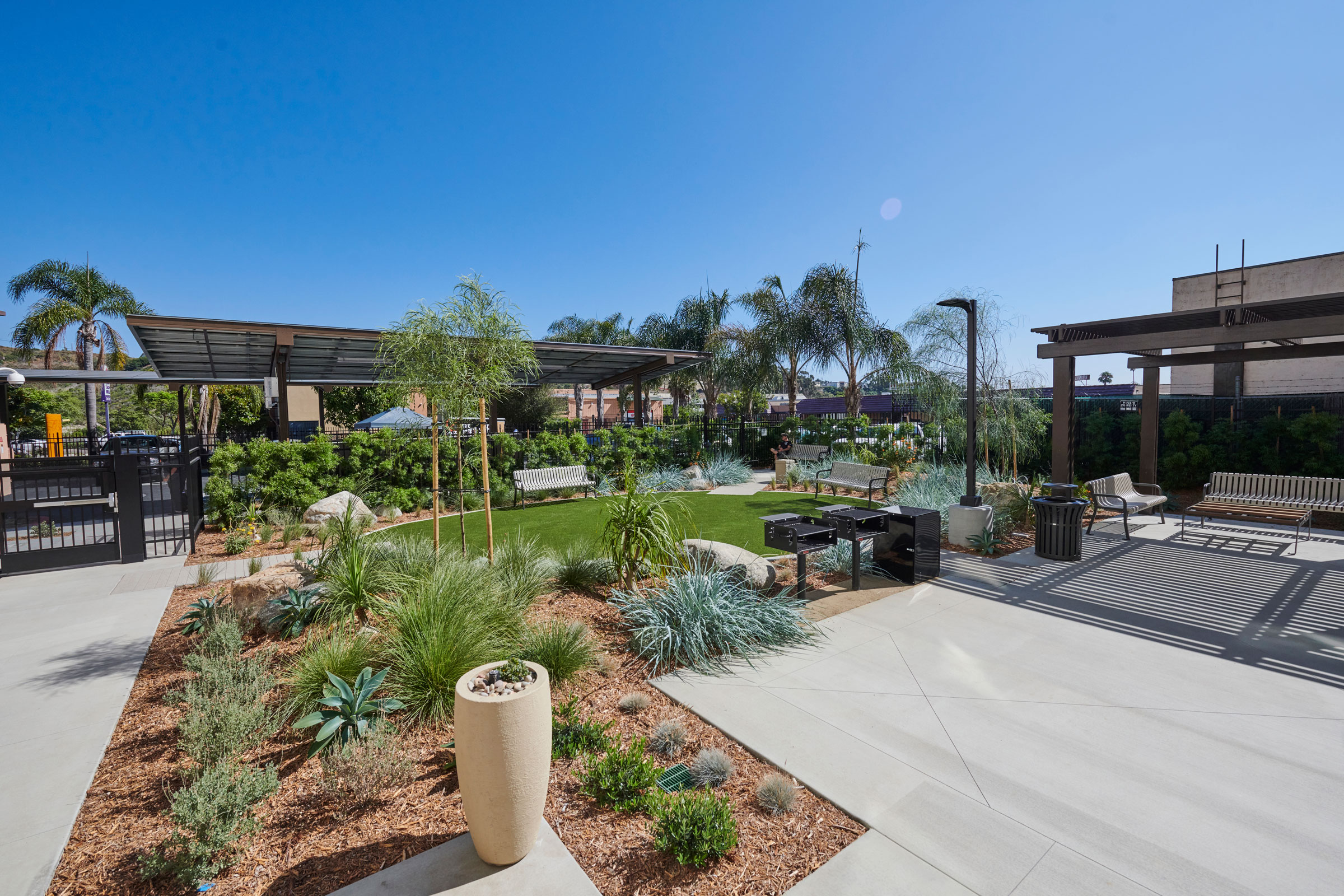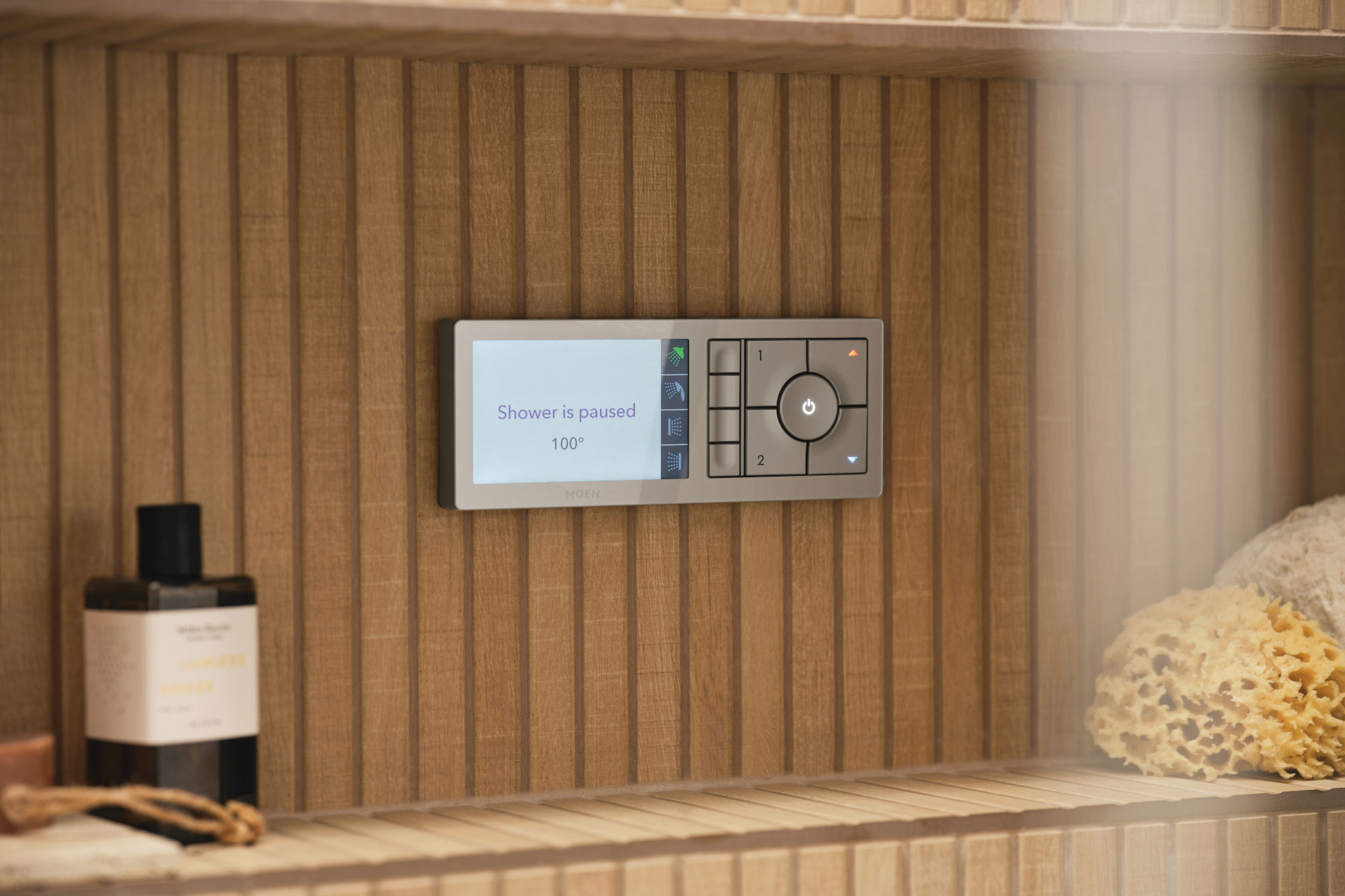Story at a glance:
- Greenbrier Village is Oceanside, California’s first permanent supportive housing community.
- RRM Design Group designed the Greenbrier Village to combine Mission-style architecture with a range of community amenities.
- Sustainable, high-performance design is achievable within deeply affordable housing.
When Greenbrier Village opened its doors in Oceanside, California, it marked a turning point in the city’s approach to homelessness.
Developed by National CORE in partnership with the San Diego Community Housing Corporation, the 38,548-square-foot community provides 60 fully furnished apartments—50 studios, nine one-bedrooms, and one two-bedroom manager’s unit—for formerly homeless individuals and residents at risk of homelessness, including veterans and youth aging out of foster care.
A Community-Centered Vision
Greenbrier Village was Oceanside’s first project to navigate California’s administrative approval process for affordable housing—an approach that allowed the team to exceed local density and height limits but extended the approval timeline by nearly a year. Despite this, the project emerged as the city’s top choice for supportive housing, supported by a $4 million investment from the City of Escondido, more than $6.9 million from San Diego County funding programs, and more than $10 million in federal Low-Income Housing Tax Credit equity.
Designed by RRM Design Group, Greenbrier blends Mission-style architecture with a range of community amenities, including a secure access system, a landscaped courtyard, community room and kitchen, technology center, and fitness room. The design ensures the building complements its neighborhood while creating a safe, dignified environment for residents.
Sustainability at Its Core
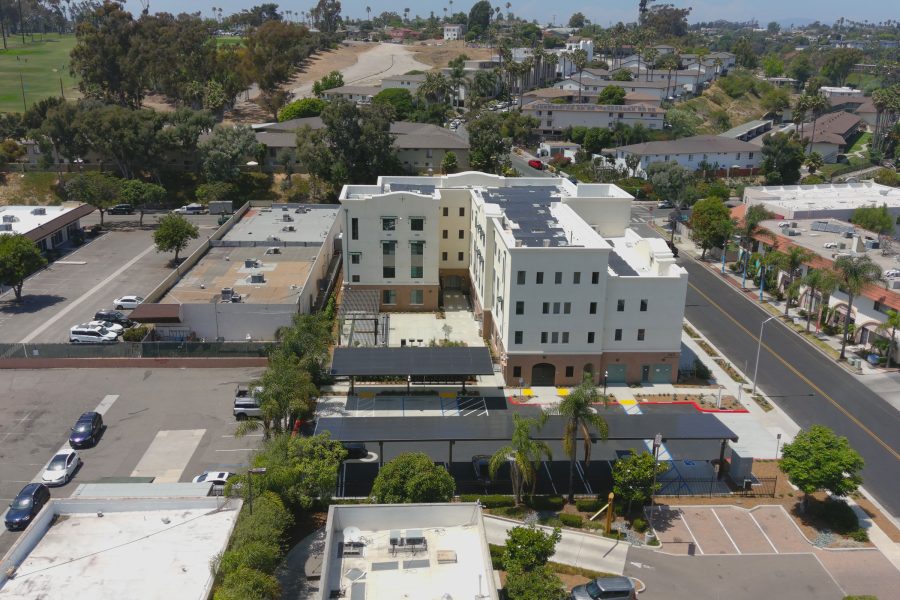
Greenbrier Village is a 38,548-square-foot community with 60 fully furnished apartments for formerly homeless individuals and residents at risk of homelessness. Photo by Ryan Beck, courtesy of National CORE
Earning LEED for Homes Gold certification, Greenbrier demonstrates that sustainable, high-performance design is achievable within deeply affordable housing.
The community features all-electric systems, high-efficiency appliances, and a 120-kW rooftop solar array that offsets 75% of its total energy load. Its location—less than a quarter-mile from a city trolley station—connects residents to essential services and employment opportunities throughout North San Diego County.
Technology & Performance Modeling
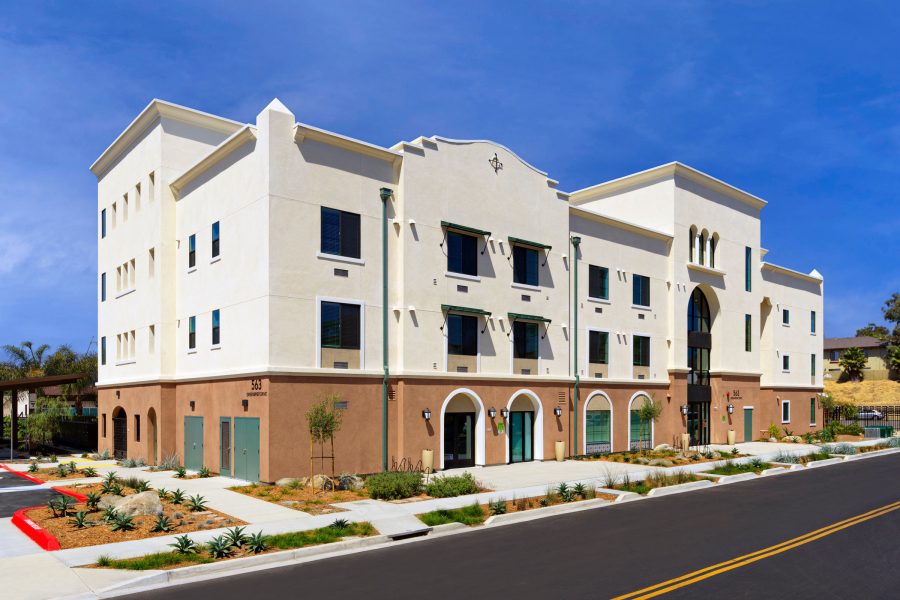
Photo by Ryan Beck, courtesy of National CORE
While the final sustainability outcomes at Greenbrier are clear—high energy efficiency, significant renewable integration, and LEED Gold performance—these results were supported by the strategic use of advanced energy modeling.
From the outset the team made whole-building performance a cornerstone of the design process. Rather than treating energy efficiency as an add-on, performance goals were embedded into every design decision, ensuring sustainability, occupant comfort, and long-term operating cost savings were considered in tandem.
Central to this approach was the use of the IES Virtual Environment (IESVE), a comprehensive building performance simulation platform. The design team created a detailed digital model of the building, using IESVE to evaluate and refine key parameters such as window size and orientation, shading strategies, and HVAC system design. The modeling accounted for Greenbrier’s open floor plan layouts, varied apartment types, and shared community spaces, ensuring optimal daylighting, thermal comfort, and energy use across the building.
By simulating real-world operating conditions—including seasonal temperature shifts, solar gains, and occupant behavior—the IESVE model provided actionable insights that directly shaped the final design. This process helped identify the ideal glazing ratios for both efficiency and comfort, informed the selection and sizing of high-efficiency heat pumps, and supported strategies to minimize heating and cooling loads.
These design-stage insights were complemented by other advanced technologies aimed at ensuring long-term performance. Water flow controls help keep water usage below targeted thresholds, while all-electric systems—including the heat pump-based HVAC—are powered in part by a 120-kW rooftop solar array, offsetting 75% of the building’s total energy demand. The result is a building that not only meets LEED for Homes Gold standards but also delivers tangible benefits to residents and the environment for years to come.
Integrated Support Services
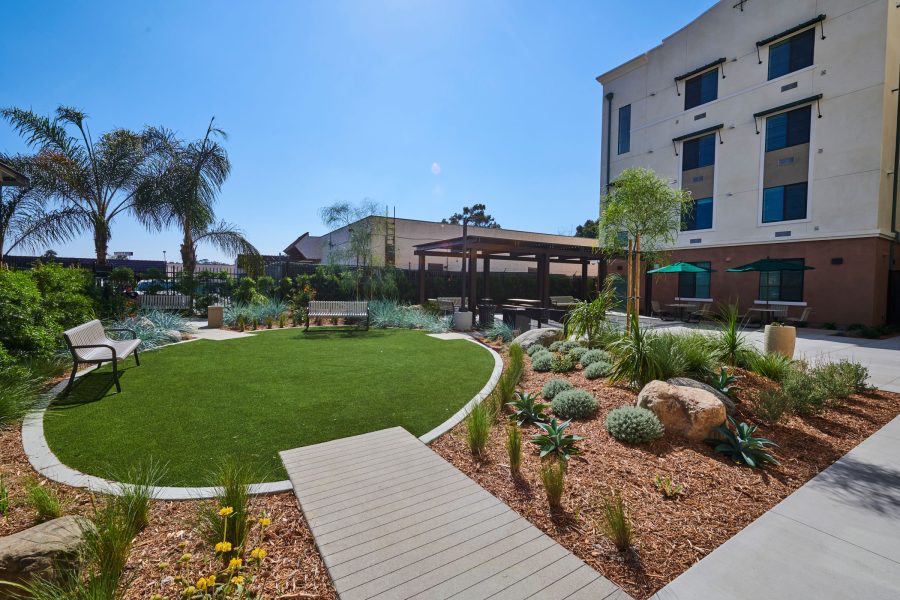
Photo by Ryan Beck, courtesy of National CORE
Beyond housing, Greenbrier offers a comprehensive suite of onsite services through partnerships with the Hope through Housing Foundation, Interfaith Community Services, San Diego County Behavioral Health, and the Department of Veterans Affairs.
Services range from case management and mental health referrals to financial coaching and educational programs, all tailored to help residents achieve stability and independence.
Transforming Lives
For residents like Mary-Elizabeth, a lifelong Oceanside community member who experienced years of homelessness after a family tragedy, Greenbrier has been life-changing. “It’s my pot of gold at the end of the rainbow,” she says. “I’ll never forget where I came from, but now I can finally feel safe.”
With its combination of thoughtful design, sustainable performance, and holistic services, Greenbrier Village is more than housing; it’s a model for how cities can create resilient, compassionate communities.

